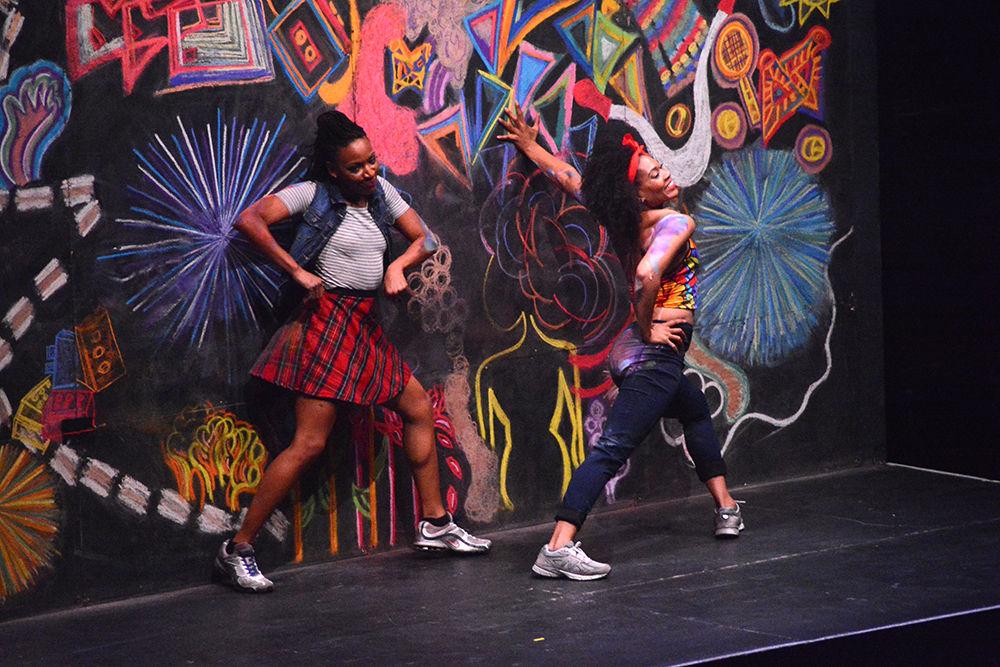The black experience in America is one historically wrought with struggle and adversity. Through oppression, black culture has proliferated and carried on to become a signifying aspect of America’s own culture.
“BLACK GIRL: Linguistic Play” by Camille A. Brown and Dancers adeptly portrays black female culture as it progressed through Africa to America through an eclectic performance featuring a unifying cultural aspect: dance.
“[The play] celebrates the unspoken rhythm and language that black girls have through Double Dutch, social dances and hand-clapping games that are contemporary and ancestral,” Brown said before the performance. “I realized I was exhausted by stereotypes … As a black female director, I battle with them daily.”
The performance featured three duets, each portraying a different topic. When the performers weren’t dancing a capella, they were accompanied by freeform piano and electric bass, which opened the show with individual solos.
In terms of staging, the setup was simple, yet unique. The main backdrop was a chalkboard featuring explosive, colorful graffiti. Bright, drawn-out patterns, flowers, and clouds plastered the wall in an abstract manner. In addition to the centerpiece, there stood four platforms of differing heights that the performers utilized throughout the show. The musicians were also situated on stage.
The show was marked by ebbs and flows. As the dancers started with freeform, almost balletic dancing, the music was sparse. They would progress to more involved, percussive dancing ranging from body percussion to stomp to tap dance. As the intensity increased, so would the emotion behind the performance, which would paint a vivid picture of the history behind the dances.
The beginning act set a unique precedent for the entire show; it included an eclectic group of cultural dances advancing through the ages, effectively encapsulating the overall black culture we see today.
As the show reached its second act, the theme took a sharp turn to address black culture exhibited through urban youth. Two performers, dressed similarly to schoolgirls, told a story of ostracization and eventual acceptance through Double Dutch, an aspect that unites so many young African-American girls.
“You have to pound the pavement for hours … to earn your stripes in the playground or city sidewalks,” read a pamphlet referencing Double Dutch. “Black girls start sharpening their corporeal skills at an early age and begin to incorporate complex step, patterns and speed […] as they advance.”
The third act was marked an emphasis on white powder. A single dancer spent the act’s entirety enthusiastically playing and dancing with it until another came and seemingly taught her to abandon it.
Finally, the show concluded with the return of all the previous dancers returning to stage. They proceed to provide their own vibrant dance style as the music became more exciting and almost hopeful.
The purpose of the show is pertinent and brings about valuable perspective. The study of historic African dance provides a comprehensive narrative of the black experience throughout time. Andrea Woods Valdes, a professor of dance at Duke, discussed this before the show.
“Everyone has a story to tell,” Valdes said. “The presence of black women in America offers a rich and valuable landscape to explore.”
After the show’s conclusion, the audience was invited to decorate its own chalkboard in a similar fashion to the one used as a backdrop before the show. Speaking for a multi-generational struggle for racial and gender equality, the messages written included those of love, peace, sisterhood and beauty.
At the end of her pamphlet, Brown offers a question worthy of contemplation:
“[The show] embodies all these movements’ languages that have been rooted in African-American culture and tradition,” Brown said. “What influences have shaped your own linguistic play?”













